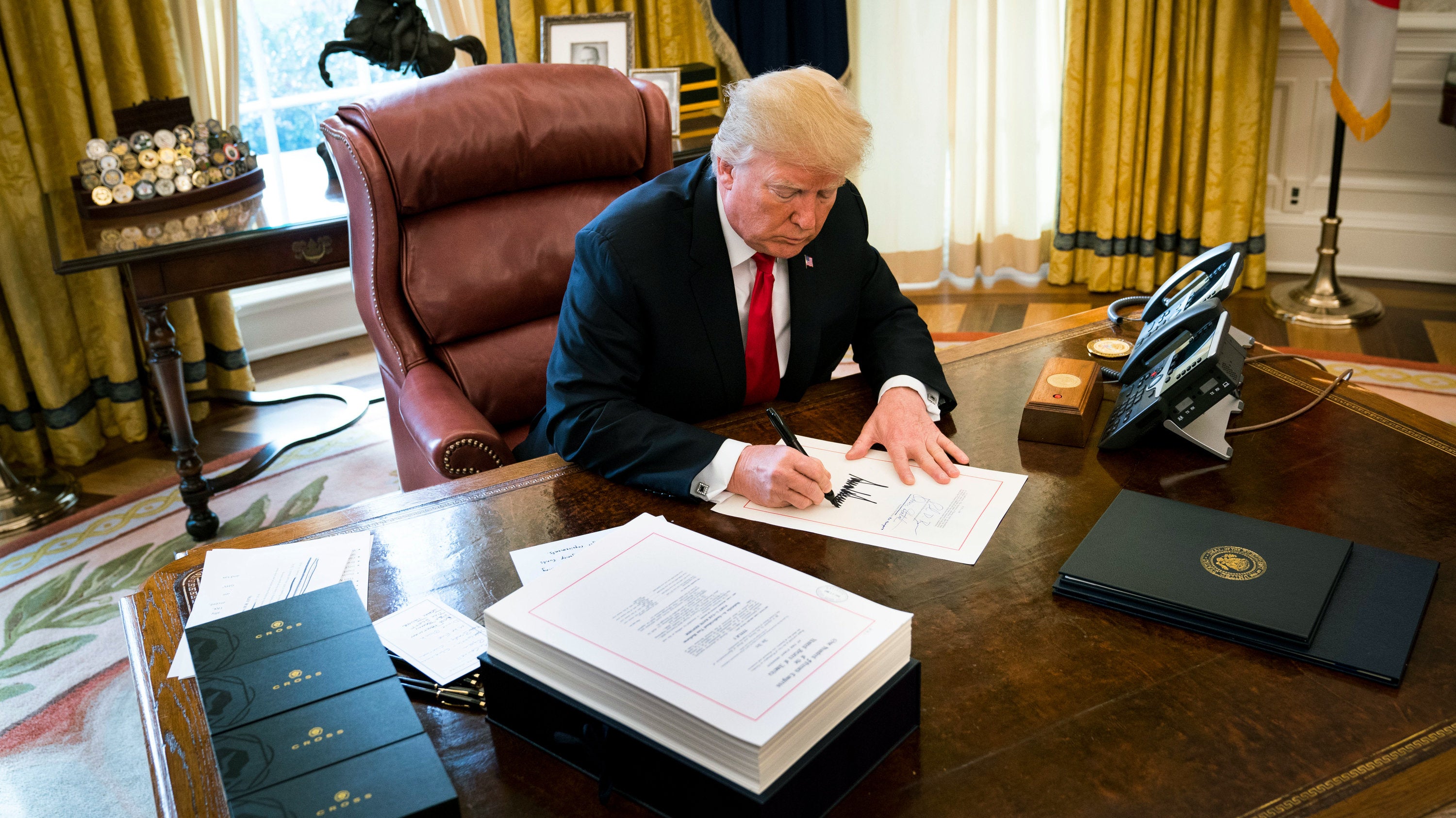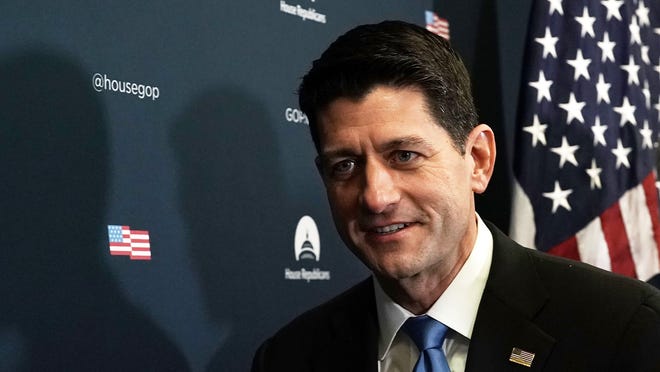Analyzing The Clinton Presidency: Budget Conflicts And Vetoes

Table of Contents
The Early Years: A Battle for Control (1993-1994)
The 1993 Budget: A Democratic Vision
President Clinton's 1993 budget proposal represented a bold, ambitious attempt to reshape the American economy. It aimed to stimulate economic growth and reduce the national deficit through a combination of tax increases and spending cuts. This plan, however, faced immediate and fierce opposition from Republicans and even some conservative Democrats who viewed the tax increases as detrimental to economic growth. The ensuing political maneuvering involved intense negotiations, compromises, and ultimately, a partial victory for the Clinton administration.
- Tax Increases: The 1993 budget included increases in income tax rates for higher earners, as well as increases in excise taxes on gasoline and luxury goods.
- Spending Cuts: Significant cuts were proposed in defense spending, although the cuts were less drastic than some Democrats had hoped for. This reflected the need for compromise to secure the passage of the budget.
- Political Fallout: The passage of the 1993 budget, achieved only through intense political maneuvering, set the stage for the increasingly contentious budget battles that would dominate the remainder of Clinton's first term. The perception of tax increases angered many voters, providing ammunition for the Republican opposition.
The Government Shutdown of 1995-1996
The government shutdowns of 1995 and 1996 represent a dramatic chapter in the Clinton presidency budget conflicts. These shutdowns resulted from a fundamental clash between President Clinton and the newly empowered Republican-controlled Congress, led by Speaker Newt Gingrich and his "Contract with America." The central issues were disagreements over a balanced budget, Medicare funding, and the overall size and scope of government. The shutdowns, while ultimately resolved through compromise, severely disrupted government services, negatively impacted public opinion, and highlighted the dangers of political gridlock.
- Key Issues: The core disagreements involved the Republicans' insistence on deep cuts in spending, particularly for social programs, and their resistance to Clinton's proposed tax increases. Medicare reform was a key battleground.
- Duration and Economic Consequences: The shutdowns lasted several weeks in total, resulting in significant disruptions to federal services. The economic impact was felt in several sectors, impacting confidence and causing temporary economic slowdown.
- Public Perception: Public opinion polls showed significant disapproval of the shutdowns, leading to a backlash against the Republican leadership in some areas. The events helped solidify the narrative that the Republicans were too extreme and unwilling to compromise.
Navigating the Divided Government (1995-1996)
The Line-Item Veto and its Challenges
President Clinton strongly advocated for the line-item veto, a power that would allow him to strike specific provisions from spending bills without vetoing the entire legislation. He believed this would enhance his ability to control spending and improve budgetary efficiency. However, the Supreme Court ultimately deemed the line-item veto unconstitutional in Clinton v. City of New York (1998), significantly limiting presidential power over the budget process.
- Proposed Line-Item Vetoes: The administration considered numerous instances to use the line-item veto to control federal spending. However, even before the court ruling, its use was limited, due to legal challenges and political pressures.
- Legal Arguments and Court Rationale: The Supreme Court argued that the line-item veto violated the Presentment Clause of the Constitution, which requires that all legislation be presented to the President in its entirety.
- Implications for Presidential Power: The Supreme Court's decision reinforced the principle of separation of powers and restricted the President's ability to unilaterally alter legislation.
Budgetary Compromises and Legislative Successes
Despite the significant conflicts, the Clinton administration did achieve some notable budgetary compromises with Congress. These agreements, while often hard-fought, played a role in fostering some degree of fiscal responsibility. Bipartisan cooperation, though limited, allowed for some legislative successes concerning the budget.
- Examples of Bipartisan Agreements: Specific examples of bipartisan budget deals should be highlighted, along with the key provisions of those agreements.
- Impact on the Economy and Social Programs: A detailed analysis of the economic and social impact of these budget agreements is crucial. The analysis should consider both positive and negative aspects.
- Long-Term Consequences: Examining the long-term consequences of these agreements is important for understanding the legacy of the Clinton administration. This involves considering both immediate effects and the long-term impact on the national debt and social programs.
The Later Years: Fiscal Responsibility and Economic Boom (1997-2000)
Balanced Budgets and Economic Growth
The late 1990s witnessed a remarkable period of economic prosperity, coupled with the achievement of balanced federal budgets. This positive trend was attributed to a combination of factors, including the economic policies of the Clinton administration, the technology boom, and a generally favorable global economic climate. This era significantly contributed to the narrative surrounding the success of the Clinton administration.
- Key Economic Indicators: Positive economic trends should be discussed including GDP growth, inflation rates, and unemployment figures.
- Role of the Technology Boom: The rapid growth of the technology sector significantly fueled economic expansion during this period.
- Impact on National Debt: The balanced budgets led to a significant reduction in the national debt, improving the country's fiscal health.
Remaining Budgetary Challenges
Despite the achievements of the late 1990s, several budgetary challenges remained, some of which continue to affect American politics today. These lingering issues highlight the fact that fiscal responsibility is an ongoing process, requiring consistent attention and political will.
- Examples of Remaining Budgetary Issues: This section should discuss the challenges that remained despite the economic success and budget surpluses.
- Analysis of their Impact: It's crucial to analyze the long-term consequences of these unresolved issues.
- Possible Solutions: This section can offer suggestions for addressing these ongoing challenges.
Conclusion
The Clinton presidency's budget conflicts and vetoes provide a crucial case study in the dynamics of American governance. The era witnessed intense political battles, periods of government shutdown, and ultimately, the achievement of balanced budgets and economic prosperity. Understanding these Clinton presidency budget conflicts offers valuable insights into the complex interplay between executive and legislative power and the challenges of achieving fiscal responsibility in a divided government. Further research into the specific vetoes and budgetary details of this era will further enhance our understanding of the Clinton presidency's budget battles and their lasting consequences. To delve deeper into the specifics, explore our extensive resources on the subject (link to relevant resources here).

Featured Posts
-
 Instituto Vs Lanus Ultimas Noticias Sobre La Convocatoria Y El Once Titular
May 23, 2025
Instituto Vs Lanus Ultimas Noticias Sobre La Convocatoria Y El Once Titular
May 23, 2025 -
 F1 Piastri Dominates Bahrain Qualifying
May 23, 2025
F1 Piastri Dominates Bahrain Qualifying
May 23, 2025 -
 The Hollywood Strike A Breakdown Of The Actors And Writers Demands
May 23, 2025
The Hollywood Strike A Breakdown Of The Actors And Writers Demands
May 23, 2025 -
 Swiss Village Evacuated Amidst Growing Landslide Risk
May 23, 2025
Swiss Village Evacuated Amidst Growing Landslide Risk
May 23, 2025 -
 Analisis De La Citacion De Instituto El Once Inicial Para Enfrentar A Lanus
May 23, 2025
Analisis De La Citacion De Instituto El Once Inicial Para Enfrentar A Lanus
May 23, 2025
Latest Posts
-
 Open Ai And Jony Ive A Strategic Partnership In The Making
May 23, 2025
Open Ai And Jony Ive A Strategic Partnership In The Making
May 23, 2025 -
 Revised Trump Tax Bill Clears House After Late Night Negotiations
May 23, 2025
Revised Trump Tax Bill Clears House After Late Night Negotiations
May 23, 2025 -
 Italy Changes Citizenship Law Great Grandparent Lineage And Eligibility
May 23, 2025
Italy Changes Citizenship Law Great Grandparent Lineage And Eligibility
May 23, 2025 -
 Jony Ives Ai Company Potential Open Ai Acquisition Explained
May 23, 2025
Jony Ives Ai Company Potential Open Ai Acquisition Explained
May 23, 2025 -
 House Votes To Pass Trump Tax Bill Following Major Revisions
May 23, 2025
House Votes To Pass Trump Tax Bill Following Major Revisions
May 23, 2025
